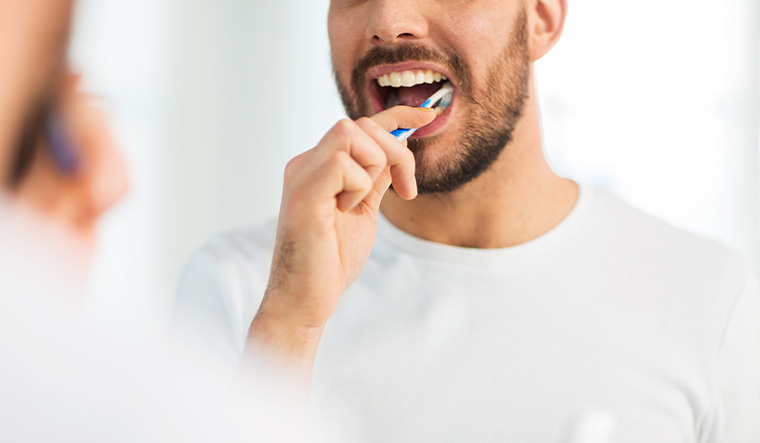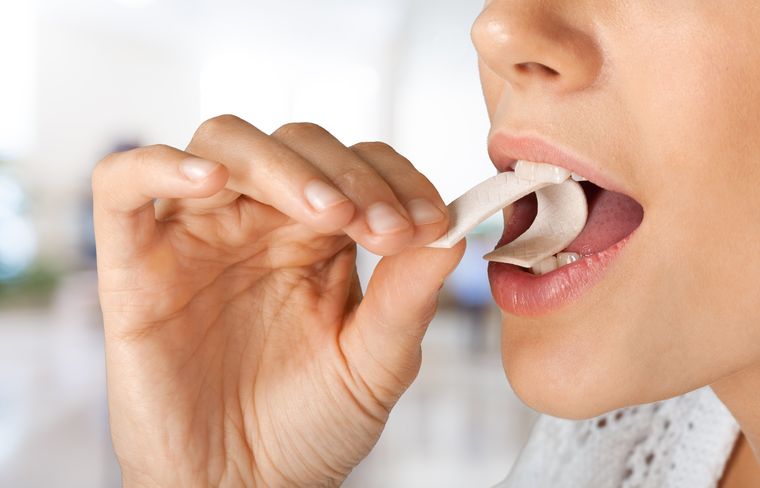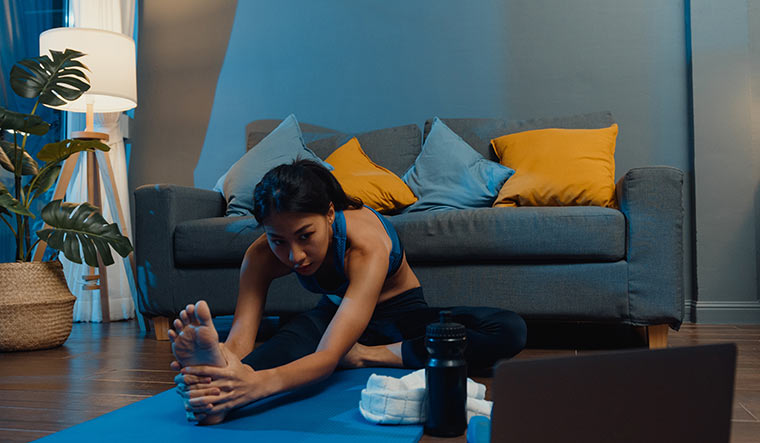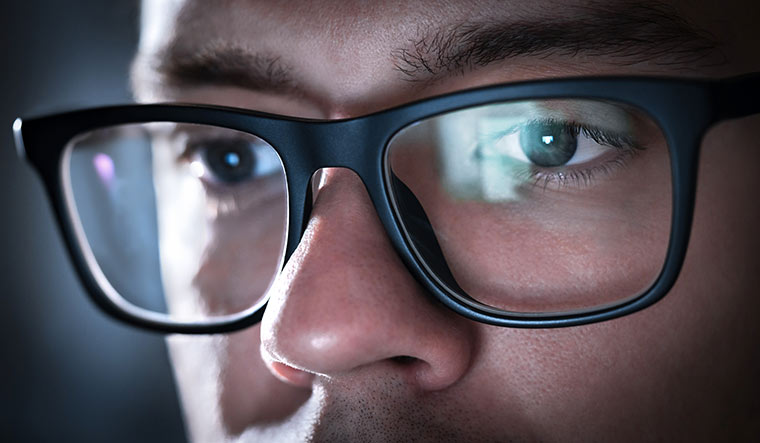TWO NEW STUDIES are touting the importance of regular exercise to reduce cancer incidence and mortality.
The first study published in the International Journal of Behavioural Nutrition and Physical Activity has shown that strength training exercises like squats, rowing, planks, and weight training can reduce a person’s risk of dying from cancer by 14 per cent.
Specifically, muscle strengthening exercises were associated with a 26 per cent lower risk of developing kidney cancer.
However, combining resistance workouts with aerobic activities, such as walking, running, swimming and cycling, reduced the risk of cancer mortality by 28 per cent.
The findings are based on a review of 12 studies that followed nearly 1.3 million people for six to 25 years.
The second study from Australia has shown that exercise may help cancer patients fight off cancerous tumours.
When a person exercises a protein called myokines is secreted by the muscles into the blood. These myokines can suppress tumour growth and help the body fight off cancer cells.
The study, published in the journal Medicine and Science in Sports and Exercise, included 10 obese prostate cancer patients who participated in a regular exercise programme for 12 weeks. The patients provided blood samples before and after the exercise programme which the researchers applied directly on to living prostate cancer cells.
The levels of anti-cancer myokines increased in the three months of exercise. At the same time, there was significant suppression of the growth of prostate cancer cells as seen in the post-training blood.
While myokines may help slow down or stop cancer growth, they do not kill the cancer cells. Instead, they signal our immune cells to attack and kill the cancer cells, the researchers explained.
SIGNS IN THE EYES
ACCORDING TO a Chinese study published in the British Journal of Ophthalmology, people who suffer age-related eye diseases such as macular degeneration, cataract and diabetes-related eye disease have an increased risk of dementia.
It is well known that conditions such as diabetes, high blood pressure, heart disease, depression and stroke can increase the risk of dementia.
The researchers analysed data on 12,364 British adults aged 55-73. The participants were assessed between 2006 and 2010 and followed up until early 2021. Among them, 2,304 people developed dementia. The risk of dementia was 26 per cent higher in people with age-related macular degeneration, 11 per cent higher in those with cataracts, and 61 per cent higher in those with diabetes-related eye disease, compared with those who did not have vision problems at the start of the study.
However, glaucoma, another common eye ailment, did not increase the risk of dementia.
New recommendations
THE USE OF LOW DOSE aspirin to prevent a first heart attack or stroke in people who are at high risk for cardiovascular diseases is no longer recommended, says the US Preventive Services Task Force.
Heart disease and stroke are leading causes of morbidity and death, and low dose aspirin has been routinely prescribed to lower the risk.
The change in recommendation reflects new data showing that daily aspirin can potentially increase the risk of severe bleeding in the stomach, intestines, and brain which can be life-threatening. The risk of bleeding increases with age.
According to the latest guidelines, high-risk people aged 60 and older should not start taking aspirin for heart disease and stroke prevention because the risk of bleeding outweighs the benefits. High-risk people between the ages of 40 and 59 should take aspirin only if recommended by their doctor. For people in their 50s, the net benefit of aspirin use is limited. For people in their 40s, there might be some benefit.
The recommendation does not apply to people already taking aspirin for a previous heart attack or stroke. They should continue to do so unless advised otherwise by their clinician. When deciding whether patients should start taking aspirin to prevent a first heart attack or stroke, clinicians should consider age, heart disease risk, and bleeding risk, the task force said.
Did You Know?
The World Health Organization has approved the world’s first malaria vaccine called Mosquirix, which could save the lives of tens of thousands of children each year.
WHO
Good oral hygiene reduces the risk of severe Covid-19
PRACTISING GOOD ORAL hygiene may lower your risk of severe Covid-19 infection, especially if you have cardiovascular diseases, according to a study presented at a meeting of the American College of Cardiology and the Egyptian Society of Cardiology.
“Oral tissues could act as a reservoir for SARS-CoV-2, developing a high viral load in the oral cavity. Therefore, we recommended maintenance of oral health and improving oral hygiene measures, especially during Covid-19 infection," said the lead author of the study.
Previous research has shown that poor oral hygiene is linked to increased inflammation and heart disease. Covid-19 severity has also been linked to an inflammatory response.
Egyptian researchers assessed the oral health, severity of Covid-19 symptoms, C-reactive protein levels (an indicator of inflammation in the body) and duration of recovery in 86 heart disease patients with Covid-19.
Poor oral health was linked to more severe Covid-19 infection, delayed recovery and higher inflammation levels.
Did You Know?
People who sleep six to seven hours a night have the lowest risk of dying of a heart attack or stroke compared to those who sleep less or more.
Study presented at the American College of Cardiology’s Annual Meeting
New blood thinner may reduce blood clot risk
PATIENTS UNDERGOING orthopaedic surgery, such as knee replacement, are at a higher risk for blood clots and are advised to take daily anti-clotting medications after their procedure.
Findings of a new research published in the New England Journal of Medicine has shown that a single injection of an experimental blood thinner called Abelacimab may greatly reduce the risk for blood clots after surgery.
Abelacimab, developed by Anthos Therapeutics, could potentially be a game-changing treatment for people at risk of blood clots.
The researchers compared Abelacimab with another blood thinner called Enoxaparin in 412 patients undergoing knee replacement surgery.
Compared with enoxaparin, a single injection of Abelacimab reduced the risk of blood clots in the veins in the leg by 80 per cent for up to a month after surgery, without increasing the risk of bleeding which is a common side effect with blood thinners.
Abelacimab is an antibody that binds to both the inactive and activated forms of a clotting factor called factor XI, preventing its activation and activity, and halting clot formation, the researchers explained.
The researchers hope Abelacimab could be used in the treatment of other cardiovascular conditions such as "for prevention of stroke in patients with atrial fibrillation, for treatment of deep-vein thrombosis and pulmonary embolism, clots in the veins of the leg and clots in the lung, and in patients with cancer.”
Did You Know?
Increasing the amount of space between printed letters is a simple and effective method to increase the reading speed and accuracy of kids with dyslexia as well as those without. The extra-large letter spacing helped kids without dyslexia read 5 per cent faster and those with dyslexia read 13 per cent faster.
Research in Developmental Disabilities
Chewing gum to solve gut problems
ACCORDING TO A STUDY presented at the annual Perioperative and Critical Care Conference from the Society of Thoracic Surgeons, chewing gum could be a simple and inexpensive solution that could help cardiac surgery patients avoid postoperative digestive problems and recover faster.
Heart surgery patients may sometimes develop postoperative ileus, a condition that prevents normal muscle contractions in the intestines that leads to food buildup and potential blockage in the intestines. This can cause abdominal cramps, bloating, nausea, vomiting, constipation, and difficulty tolerating a normal diet and can slow the recovery process.
To analyse the benefits of chewing gum in cardiac surgery patients, the researchers asked 341 patients to chew one piece of sugarless gum three times a day for five to 10 minutes after their surgery. Rates of postoperative ileus were compared between this group and 496 patients who had similar cardiac surgeries but did not chew gum after their procedures.
Only two patients in the gum-chewing group had confirmed postoperative ileus, compared to 17 patients in the non-gum chewing group.
Chewing gum stimulates the digestive system by tricking it to believe that food is coming. This process is known as “sham feeding”, the researchers explained.
Screening to reduce stroke risk
SCREENING OLDER adults for atrial fibrillation (Afib), a heart rhythm disorder, could reduce the risk of stroke, severe bleeding and death, according to a Swedish study published in the journal The Lancet.
Atrial fibrillation, or irregular heartbeat, is associated with a five-fold increased risk of ischemic stroke. With early detection, patients can be started on anticoagulant therapy which can reduce the risk of stroke and mortality.
The study included about 28,000 people aged 75 and 76 who were randomly invited to join either a screening (13,979) or a control group (13,996). Only half of those invited to the screening group participated. They completed a health questionnaire and underwent an electrocardiogram.
Those without Afib were asked to take home the ECG device and record their heart rhythm twice daily for two weeks. If the patients detected irregular heart rhythms, they were referred to a cardiologist and started on oral anticoagulants.
During six to nine years of follow-up, the incidence of stroke, severe bleeding and death were slightly lower in the screening group compared to the control group (31.9 per cent vs 33 per cent).
The researchers point out that only half of those invited to screening participated and the benefits could have been more pronounced had more people done the screening.
Bedtime is a bad time for exercise
WORKING OUT CLOSE to your bedtime can negatively impact your sleep quality. For the study published in the journal Sleep Medicine Reviews, Canadian researchers analysed data from 15 published studies, that included 194 participants, to examine how a single session of intense workout can affect young and middle-aged healthy adults and their sleep. They also looked at the fitness level of the participants, the duration of the exercise and how different types of exercise influence sleep.
Exercising in the early evening was optimal for sleep quality. High-intensity exercise that ended two hours before bedtime was associated with better sleep onset and improved sleep duration, especially when performed by sedentary people.
Exercising 30 to 60 minutes appeared to be the most beneficial for sleep onset and sleep duration. Of different types of exercise, cycling had the most sleep benefits. It helped with sleep onset and deep sleep.
On the other hand, people who ended their exercise less than two hours before bedtime had poor sleep quality. They took longer to fall asleep and stay asleep.
Keeping a consistent exercise schedule is also important since exercising at different times of the evening could cause sleep disturbances.
Sleep hygiene strategies such as taking a shower after exercise and avoiding eating heavy meals or drinking a lot of water before going to bed would also promote good sleep quality.
Did You Know?
Women who get more sunlight in their first trimester have a ten per cent lower risk of developing problems with their placenta that can lead to premature birth and baby loss compared to those exposed to the lowest levels.
Frontiers in Reproductive Health
Screens of danger
SPENDING TOO much time on digital smart devices can impair our eyes and vision.
A study published in The Lancet Digital Health has found a link between screen time and a higher risk and severity of myopia, or short-sightedness, in children and young adults.
For the study, researchers from Singapore, Australia, China and the UK analysed more than 3,000 studies that included children and young adults aged between three months and 33 years.
High levels of smart device screen time were associated with about a 30 per cent greater risk of near-sightedness. When the usage of smartphones and tablets was combined with excessive computer use, the risk increased to around 80 per cent.
The study authors estimate that about half the population in the world will have myopia by 2050. Spending less time outdoors and more time engaged in near-vision activities are two major driving factors that “could lead to an increase in the global burden of myopia and its complications, such as irreversible vision loss,” the study concluded.
CONTRIBUTOR: SHYLA JOVITHA ABRAHAM







